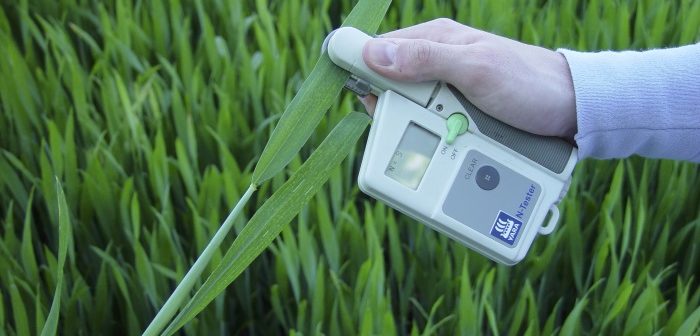Going ‘beyond the basics’ with better use of testing and data analysis can directly improve your farm’s bottom line, believes Jon Telfer, Development Manager at Yara Analytical Services. Here he offers his expert advice on the tests available and utilising the results.
1. Know your status
If you haven’t collected sufficient soil fertility data, how do you know what is holding you back? Remember, a deficiency in even one nutrient can inhibit yield and quality. Basic nutrient availability tests, including soil, leaf and muck analysis, are well adopted in the arable sector; it’s now time for farms to look at other parameters that will impact on-farm production, most importantly the 3 pillars of soil fertility: nutrient availability, soil type and organic matter – all of which can be tested.
2. Opt for broad spectrum nutrient testing – A basic soil test only checks pH and the level of major nutrients. Go beyond the basics by always opting for a broad spectrum test which will also assess key micronutrient reserves. This ensures that one deficiency isn’t compromising yields.
3. Understand your soil type – It is important to have a firm understanding of your soil type, and the variation across your farm, as this will impact on how applied nutrients behave and so inform decisions- e.g. lighter soils are more prone to leaching so you may alter timings and regularity of fertilizer applications. Equally, heavy soils can lock up nutrients so it may be that you adopt a foliar approach and bypass soil problems altogether. A laboratory laser diffraction analysis will accurately determine the sand, silt and clay proportions that define your soil’s texture.
4. Include Organic Matter (OM) analysis – Active soil biology is vital if a soil is to remain fertile. OM provides the habitat and food source for the bacteria, fungi, protozoa, arthropods and nematodes that build soil structure and breakdown organic residues. This converts soil-borne nutrients into a form that are available to a growing crop. The addition of OM analysis to your soil testing schedule gives you a clearer picture of the levels in your soils and the effectiveness of any applied organic amendments.
5. Get better insight with foliar analysis
The uptake of nutrients to the crop can be affected not only by soil type but by compaction, water availability, soil temperature, nutrient interactions and disease. The only way you can really determine the nutrient health of the crop is to take a leaf sample. It’s then possible to identify and address any nutrient deficiencies before they become visually apparent and the plant has reached a point of stress, from which there’s often no return.
6. Know your muck & slurry values
Accuracy can also be added with better precision for slurry and muck values: actual results can vary enormously from book value quotes in RB209. Yara Analytical Services advice is to always test them – if your slurry or manure content is far from the book value you will be building inaccuracies into your nutrient management.
7. Act on your results
Once you’ve measured, don’t forget to manage! Be ready to act on the recommendations of the analysis and discuss your results with your agronomist. By always using a UKAS accredited lab, you can be sure the results you are working with are accurate and reliable. Some fairly straight forward changes can potentially make a big difference to yields and help you to achieve the full potential of your land and crops.




